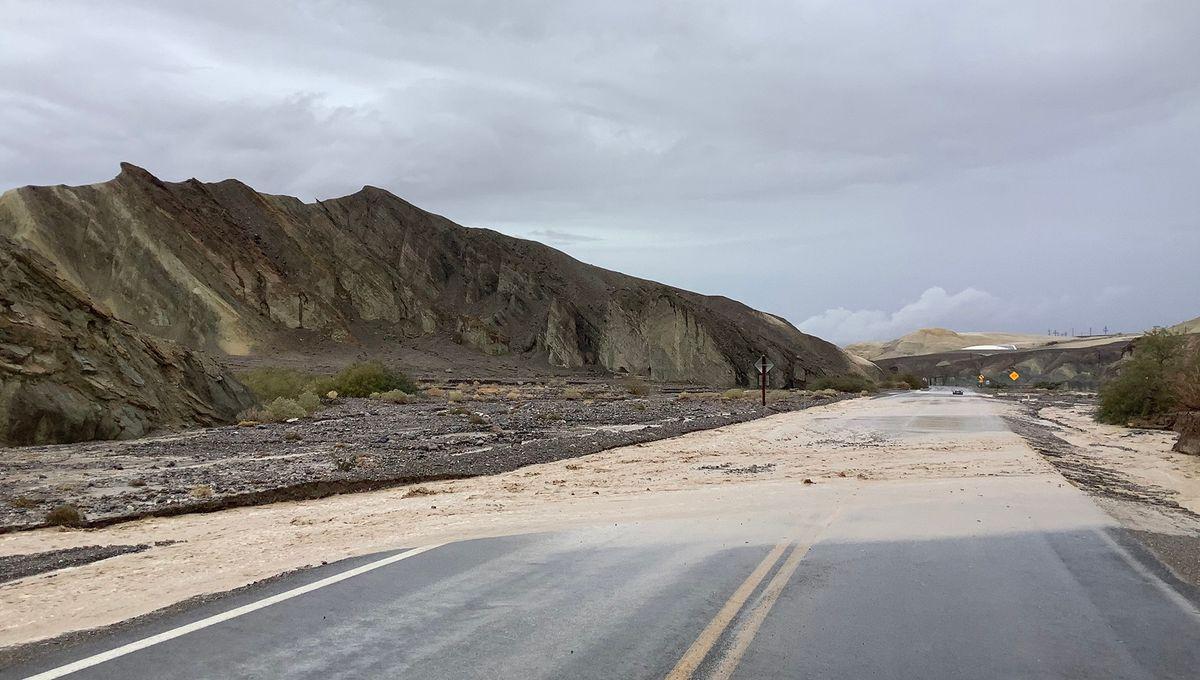-
Fil d’actualités
- EXPLORER
-
Pages
-
Blogs
-
Forums
Atmospheric River Brings North America's Driest Place 25 Percent Of Its Yearly Rainfall In A Single Day

Atmospheric River Brings North America's Driest Place 25 Percent Of Its Yearly Rainfall In A Single Day
To say it’s been a bit wet in Southern California of late would be something of an understatement. At the end of last week, a powerful atmospheric river dumped an extreme amount of rainfall on the region, including in Death Valley.
The rest of this article is behind a paywall. Please sign in or subscribe to access the full content. According to a Facebook post from Death Valley National Park, Furnace Creek – which is home to one of the park’s automated weather stations – received 1.52 centimeters (0.6 inches) of rain on November 15. That might not sound like much, but this happened in a typically toasty area that’s more parched than a pack of saltines. Furnace Creek is the driest place in North America – and the hottest place on Earth. Last year, it experienced its hottest summer on record, with temperatures at one point hitting 54°C (129.2°F). That’s a mere couple of degrees cooler than the world’s highest recorded temperature, the sweltering 56.7°C (134°F) recorded at Furnace Creek back in 1913. Not even an inch of rain, then, is pretty much a barrage. In fact, it’s about 25 percent of Death Valley National Park’s average annual rainfall. This has resulted in flooding, topped up by further rains on November 18, with several roads throughout the park currently closed as a consequence. But heavy rains in this normally arid landscape can also bring some natural wonders, and no place is that clearer than the vast salt flat of Badwater Basin. Back in 2023, Hurricane Hillary dumped a year’s worth of rain on Death Valley in a single day, transforming the basin into an ephemeral lake (meaning it’s not a permanent body of water). Dubbed Lake Manly, it was set to dry up until an atmospheric river in February 2024 dropped 38 millimeters of rain on Death Valley over three days, with water then draining into the basin and filling the lake up again. It did eventually disappear once again, but at its deepest, people were able to boat on it. Elsewhere in SoCal, the rainfall from last week’s atmospheric river broke records set by a November 15 storm in 1965 in several places, Adam Roser, a meteorologist with the National Weather Service, told SFGate. This included San Diego, Santa Ana, Riverside, and Palm Springs, the latter of which far surpassed the 60-year-long record of 0.71 centimeters (0.28 inches) when it received 2.74 centimeters (1.08 inches) of rain last Saturday. Though these new records may have made the news, the Golden State is no stranger to atmospheric rivers – flowing columns of water vapor in the atmosphere. “California is ideally located for atmospheric rivers, as extratropical cyclones formed over the North Pacific Ocean can tap into warm tropical air and, when positioned right, transport a large amount of water vapor from the tropics to the California coast,” explains Columbia Climate School professor Mingfang Ting. These atmospheric rivers – including the famed “Pineapple Express” – provide between 30 to 50 percent of the US West Coast’s annual precipitation. This can be a blessing, as it contributes to the water supply – but as the devastating floods brought on by the latest event show, it can also be a curse too.


